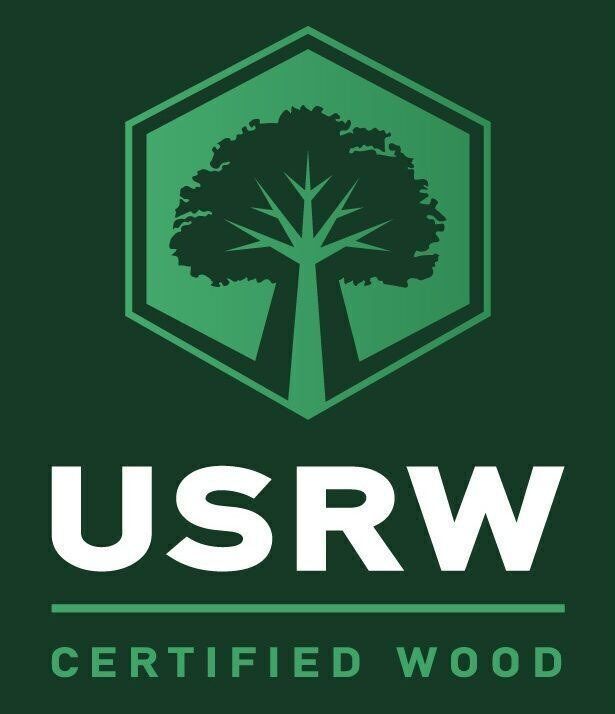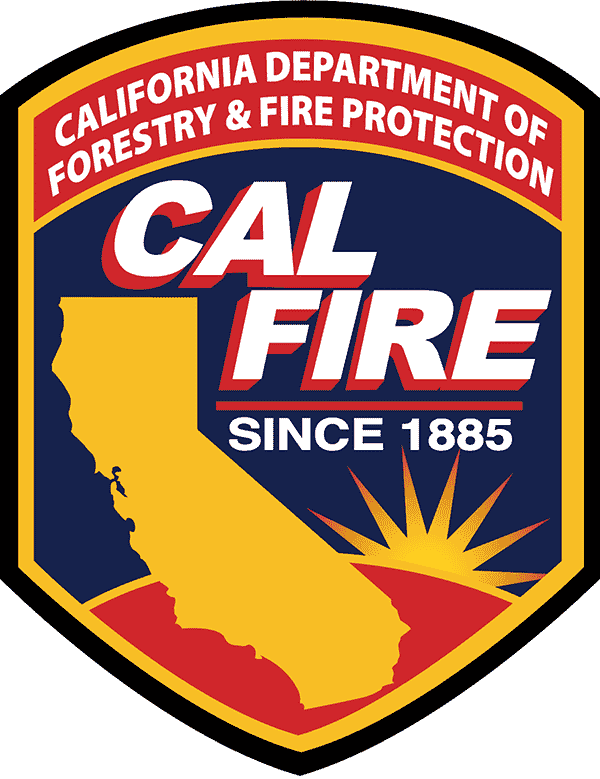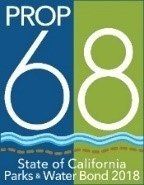USRW CERTIFIED WOOD STANDARDS
Terms and Definitions
Urban Wood
Any wood that was not harvested for its timber value and was diverted or removed from the waste-stream and developed or redeveloped into a product. Urban wood can come from 3 sources: Deconstruction, Fresh cut urban trees, and Salvaged Trees.
Accreditation Body (AB): An organization or group of industry experts that provides
accreditation services, which is a formal, third party recognition of competence to perform specific tasks. The role of an accreditation body is to assess the technical competence and integrity of the certification body.
Air Dried Lumber (AD): Wood dried by exposure to air under natural conditions; usually by stickering and stacking one year per inch of thickness in hardwoods, and six months per inch of thickness in hardwoods, although actual drying times may vary. Also known as air-seasoned lumber; natural-seasoned lumber. Uses less energy to dry, however may not reach the desired moisture content, and may still contain insect pests.
Arborist: A specialist in the care of woody plants, especially trees, (Some cities require arborists to be certified to make determinations on removal of some or all trees in their jurisdiction).
Artisan: A person skilled in making a product by hand. Also referred to here as a “Maker” or a “Woodworker”.
APHIS: US Department of Agriculture, Animal and Plant Health Inspection Service. https://www.aphis.usda.gov/
Carbon Sequestration/Storage: the process involved in carbon capture and the long-term storage of atmospheric carbon dioxide or other forms of carbon.
Certification: the action or process of providing someone or something with an official document attesting to a status or level of achievement.
Certification Body (CB): Any recognized and accredited organization the primary responsibility of which is the assessment of objective evidence regarding the compliance with applicable regulations and recognized standards.
Certified Arborist: An arborist certified by the International Society of Arboriculture.
Chain of Custody (CoC): The chronological documentation of the path wood products, and the finished products made from them, taken from the urban forest or urban environment salvage site, orchard, or deconstruction site, to the consumer or to final installation; including all harvesting, deconstruction, hauling, processing, manufacturing and remanufacturing, drying, storage and distribution links.
DBH – Diameter Breast Height: A standard measurement of the diameter of the trunk of a standing tree. Tree trunks are measured at the height of an adult’s breast, approximately 4.5’ above ground level.
Deconstructed Wood, (also referred to as Post-consumer reclaimed material and Reclaimed Urban Wood or Reclaimed Urban Lumber): Processed wood retrieved from its original application for purposes of subsequent use. Most deconstructed or reclaimed lumber comes from timbers, boards, siding, and decking rescued from old barns, factories and warehouses, although some companies use wood from less traditional structures such as boxcars, coal mines and wine barrels; Reclaimed or Deconstructed Wood is wood that was previously used in the building of another structure which, when disassembled, is recycled and used in a new building or product. Material that would have otherwise been disposed of as waste or used for energy recovery but has instead been collected and reclaimed as input material, in lieu of virgin material, for reuse, recycling, re-milling in a manufacturing process or other commercial application.
Drying Professional: A person whose job entails operating a kiln or otherwise drying wood. Also known as a kiln operator.
EAB: The emerald ash borer, also known by the acronym EAB, is a green buprestid or jewel beetle native to north-eastern Asia that feeds on ash species. Females lay eggs in bark crevices on ash trees, and larvae feed underneath the bark of ash trees to emerge as adults in one to two years, (Wikipedia).
EMC: Stands for Equilibrium Moisture Content. The moisture content of wood depends on the relative humidity and temperature of the air surrounding it. If wood remains long enough in air where the relative humidity and temperature remain constant, the moisture content will also become constant at a value known as the EMC or equilibrium moisture content.
Forest Practice: State or Federal regulations to ensure that logging is done in a manner that will preserve and protect our fish, wildlife, forests and streams and the environment. Additional rules enacted by State or Federal Forestry and Fire Protection Agencies are also enforced to protect these resources.
Forester: A person who practices forestry, the science, art, and profession of managing
forests. In most areas, holds some form of locally recognized certification in order to practice in said area. (Registered Professional Forester, Society of American Foresters, Certified Urban Forester, etc.).
Fresh Cut: includes trees that were freshly cut, that were not harvested for their timber value and that came from areas where we live.
Genetically Modified Tree: A tree whose DNA has been modified using genetic engineering techniques. Note: Orchard, Grafted, Hybrid & Nursery Trees are not considered genetically modified.
High Conservation Values (HCV): As defined by the Forest Stewardship Council: Biological, ecological, social, or cultural values of outstanding significance. A key part of HCVs is ensuring activity in urban and other forests does not have a negative impact on biodiversity – that is, the diversity within and between species, and the ecosystem as a whole.
Interim Certification: A status that may be granted to items which were in an inventory prior to the USRW Standards implementation and therefore may not have documentation to fulfill star level certification.
Kiln: Any of various ovens or chambers for hardening, burning, or drying substances, in this case wood and wood products.
Kiln dried lumber (KD): Lumber that has been heated in a kiln to lower the moisture content, (MC) treat for insects, or both. (See Appendix A for details)
Licensed Timber Operator (LTO): Persons who have been licensed under the Forest Practice Act law and are authorized to conduct forest tree cutting and removal operations. LTOs must understand and comply with all laws relating to such tree cutting or removal.
Local Wood: Refers to wood and wood products that have not traveled a significant distance from point of origin to final destination, including all processing and manufacturing procedures. To be considered “local”, that distance must be less than 500 miles. Urban wood
and urban wood products that travel a greater distance may still be certified under the USRW Standards, but may not be labeled as “local”.
Log or Lumber Hauler/Trucking Company: A person or company who provides the service of transporting logs and related wood products using logging trucks or other heavy equipment. Note that many urban logs are hauled by non-traditional means such as tow trucks and others not traditionally engaged in log/lumber hauling.
Manager: Person who directs and manages an organization.
Moisture Content: The total amount of water in a piece of wood is called its moisture content (MC). Moisture content is defined as the weight of the water in the wood divided by the weight of the wood.
Moisture Content Category: Moisture content categories are defined in Appendix A of this document and will be required for USRW Certified labeling.
Orchard Wood: A type of urban wood that is sourced from an orchard. An orchard is an intentional planting of trees or shrubs that is maintained for food production. Orchards comprise fruit- or nut-producing trees which are generally grown for commercial production.
Organization: An organization is an entity comprising multiple people that has its own functions, responsibilities and authorities to accomplish a collective goal.
Plantation: Forest plantations embrace a range of forest types with the one common feature that the great majority of the trees present were established on the site by planting and/or seeding (sowing).
Reclamation Site: The location, process or site where material is diverted from the waste stream from industrial, residential or municipal sources and reclaimed thereby constituting the starting point within the supply chain for reclaimed material.
Registered Forester: individuals who are licensed to practice the profession of forestry, and whose activities have an impact upon the ecology of forested landscapes and the quality of the forest environment.
Removal Permit: Documentation from a public agency (where applicable) that the removal was approved within their removal standard.
Reclaimed Urban Lumber/ Urban Wood, (also referred to as Post-consumer reclaimed material and Deconstructed Wood): Processed wood retrieved from its original application for purposes of subsequent use. Most reclaimed lumber comes from timbers, boards, siding, and decking rescued from old barns, factories and warehouses, although some companies use wood from less traditional structures such as boxcars, coal mines and wine barrels; Reclaimed or Deconstructed Wood is wood that was previously used in the building of another structure which, when disassembled, is recycled and used in a new building or product. Material that would have otherwise been disposed of as waste or used for energy recovery but has instead been collected and reclaimed as input material, in lieu of virgin material, for reuse, recycling, re-milling in a manufacturing process or other commercial application. (some sellers try to sell wood products as “antique or reclaimed” when in fact they are new. CoC will prove authenticity)
Rural Area: any population, housing, or territory outside urban areas.
Salvaged Tree: trees that have been damaged by wildfire, flood, severe wind, disease, insect infestation, or other disturbance. These trees may or may not have come from an urban forest. Many times these trees come from more rural areas or transportation routes. It could be from trees that are dead, have fallen or need to be removed for some reason, such as fire prevention thinning, levy improvement projects, orchard removal, or new construction, etc. For example, trees are often removed to build a highway, protect a highway, or to construct new housing. (For the purposes of the standards, these were trees that were not harvested for their timber value.)
Salvaged Wood: Wood products from salvage trees.
Sawmill: a facility where logs are cut into lumber; can include a portable sawmill.
Sawyer: A person who saws logs into lumber.
Small End Diameter (SED): The measurement of the diameter of the small end of a tree inside the bark and its tapered shape retained. This measurement is done when the tree is no longer standing. In the case of urban logging where limb branching may be preserved as part of the log length, small end diameter may be represented by the best estimation of the smallest inside-the-bark diameter below the limb flare.
SKU: stock-keeping unit; a unique identification, usually alphanumeric, of a particular product that allows it to be tracked for inventory purposes.
Species Replacement Plan: A plan for replacing trees with the correct tree as per local tree experts in an urban environment after they have been removed. (See Appendix C for a list of criteria for selecting the correct tree. Including https://selectree.calpoly.edu/ )
Stakeholder: Any member of the USRW, group, community or organization with an interest in the subject of the standard.
Timber Operator: a person who is engaged in timber operations or who contracts with others to conduct the operations on his or her behalf, see also Licensed Timber Operator, (LTO).
Tree Service: The occupation of caring for and maintaining trees and removing trees.
Transportation Document: A written record showing details of the load such as; the time and date of a load, how many logs on the load, details of where the logs came from and the destination mill/site, the sale number or exemption permit number, method of removal etc. (point of custody doc) This can include a trip ticket or any other written record.
Urban Forest: A forest or a collection of trees that grow within an urbanized area, rural area or urban cluster as defined by the US Census Bureau. In a wider sense it may include any kind of woody plant vegetation growing in and around human settlements.
Urban Cluster: represent areas containing at least 2,500 and less than 50,000 people.
Urbanized Area (UA): A UA is a continuously built-up area with a population of 50,000 or more.
Urban Forest Management Plan, (UFMP): Coordinates the management and administration of an urban forest. The plan documents information specifying objectives, actions and control arrangements concerning the management of ecosystem resources and services for a set period of time, and responds to environmental mandates, clarifies confusion about resource management and authority, coordinates the roles of the different agencies and bureaus, and addresses problems that may be of concern. The goals the management plan focuses on are to protect and restore the urban canopy, support the urban forest, and maximize the benefits of the urban forest for all citizens
Urban Lumber: Lumber that comes from urban wood. (See Urban Wood) Urban Lumber Grades & Definitions: (See
Appendix B)
Urban Wood: Any wood that was not harvested for its timber value and was diverted from or removed from the waste-stream and developed or redeveloped into a product. Urban wood can come from 3 sources: Deconstruction, fresh cut urban trees, & salvaged wood. The source
location for urban wood can include: urban forests, urbanized areas, urbanized places outside urban areas, and generally any areas where we work and live.
Urban Wood Policy: this is a non-compulsory policy for public agencies, municipalities and other urban tree owners/managers to adopt that provides an end of life urban wood policy for when a tree is removed that includes an Urban Wood Salvage Plan, a Species Replacement Plan, and an Urban Wood Utilization in New or Modified Public Construction Projects Plan. (See Appendix C for an example).
Urban Wood Salvage Plan: A plan to salvage urban wood from trees that were removed from an urban environment and give them a second life. This should be a part of every successful Urban Forest Management Plan.
Urban Wood Utilization in New or Modified Public Construction Projects Plan: A plan to utilize some portion of urban wood in all building projects. Sometimes used for structural elements, but typically used for non-structural elements such as, but not limited to architectural millwork, cabinetry, countertops, flooring, and furnishings.
USRW Certified:
- Cities/municipalities, arborists, tree services, waste stream professionals, log and lumber haulers, wood processors, wood manufacturers and users that have met the highest standards for processing urban wood by being the best stewards of our urban forests and our local communities by meeting the requirements set forth in the USRW Standards;
- Wood and wood products that have met the chain of custody requirements set forth in the USRW Standards as attested to by an accredited certification body. Different levels of certification at both the organizational and the product level are attainable depending on how these requirements are met.
Waste Stream: The complete flow of waste from domestic or industrial areas through to final disposal. Frequently, solid wood waste ends up at the dump or the landfill. By utilizing the wood products that end up, or may have made their way to the landfill, we lessen the content of a waste stream.
Waste Stream Professional: A professional who works in the industry of waste management. This person may be responsible for diverting potentially usable or recyclable products from final disposal.
Wood Drying: Reducing the moisture content of wood before its use. This can be done through a kiln system or an air drying method. See Air dried lumber (AD), and kiln dried lumber (KD) as well as Appendix A for more detailed descriptions of wood drying categories.





